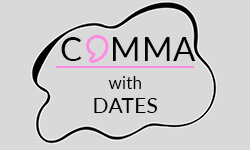
Commas can be a tricky aspect of academic writing for many students, particularly when it comes to dates. Errors and misunderstandings can arise from a lack of comprehension regarding the rules and exceptions that govern comma usage. To alleviate any confusion, this article aims to outline when to appropriately use a comma with dates, provide clear examples, and highlight any exceptions to the standard rule.
When to place commas with dates
Generally speaking, you should put a comma if you’re stating complete dates, except when using the day-month-year format. A comma should also be placed if the day of the week is included. A comma with dates is not placed if you only give the month and year.
Comma
Complete dates
Including the day of the week
No comma
Month and year
Day-month-year format
Different Style Guides may have diverse regulations about the use of commas, and some intricate sentences may have exemptions to the typical comma placement rules. It is important to contemplate whether a comma is necessary to guarantee that your sentence is lucid and understandable.
Commas with dates
When stating complete dates and including the day of the week when stating the date, a comma should be placed with dates.
Complete dates
A comma is typically placed with dates when a complete date is stated. This is because the comma helps to separate the different components of the date (day, month, and year) and improves clarity in the sentence.
Including the day of the week
When the day of the week is also stated along with the date, a comma is typically used. Here are three short example sentences to showcase the use of dates with the day of the week.
No commas with dates
Commas with dates are not placed if only the month and year are intended to be stated or the day-month-year format is being used.
Month and year
A comma is not placed with dates if only the month and year are stated. This is because the comma is used to separate the day from the month and year.
Day-month-year format
When using the day-month-year format for dates, no comma is typically used to separate the day and the year. This is a common practice in many countries, including the United States. Here are three short example sentences to illustrate this.
How to write dates in formal writing
In academic writing, the dates are expressed and not as ordinals. This means that there is no “th”, “rd”, or “nd” after the number. Even though the dates are read out loud as “February fourth”, they are not written like that in academic writing. However, if the date includes the word “of”, it is acceptable to use an ordinal number. This also applies when referring to a specific day without the month. All the following sentences are correct.
Test yourself!
Practice sheet
To test your comprehension of using commas with dates, try placing them in the appropriate positions in the 10 sentences. Afterward, check the second tab to verify if you have the correct understanding.
- On June 5 2023 there are various events and activities taking place in the city.
- Sunday September 10 2023 is a specific date that falls on a Sunday.
- December 25 2023 is a widely recognized holiday known as Christmas.
- A meeting took place on 7 February 2023.
- Mary’s 24th birthday was on August 1 2022.
- Friday 13 October 2023 is considered by some to be an unlucky day.
- The beginning of a new year is marked on January 1 2023.
- November 11 2022 is Veterans Day in the United States.
- My parents married on 3 April 2023.
- I had surgery on March 15 2022.
- On June 5, 2023, there are various events and activities taking place in the city. (Comma)
- Sunday, September 10, 2023, is a specific date that falls on a Sunday. (Comma)
- December 25, 2023, is a widely recognized holiday known as Christmas. (Comma)
- A meeting took place on 7 February 2023. (No comma)
- Mary’s 24th birthday was on August 1, 2022. (Comma)
- Friday 13 October 2023 is considered by some to be an unlucky day. (No comma)
- The beginning of a new year is marked on January 1, 2023. (Comma)
- November 11 is Veterans Day in the United States. (No comma)
- My parents married on 3 April 2023. (No comma)
- I had surgery on March 15, 2022. (Comma)
- ✓ Free express delivery
- ✓ Individual embossing
- ✓ Selection of high-quality bindings
FAQs
Commas can be used with dates. When stating a complete date or including the day of the week, place a comma with dates. Do not place commas with dates if you’re using the day-month-year format or only stating the month and year.
When writing multiple dates with commas, a comma typically separates each date. For example:
- July 1, 2023, August 15, 2023, and September 30, 2023.
This format helps to indicate each individual date within the list.
When separating multiple dates, it is common to use commas rather than semicolons. The use of commas in dates helps to distinguish each individual date clearly within the list.
